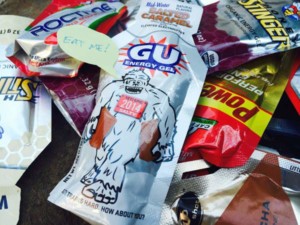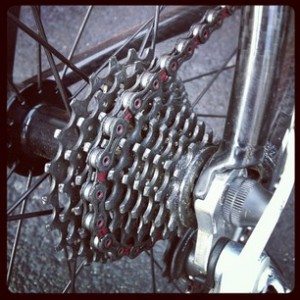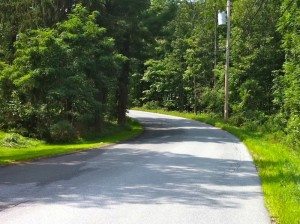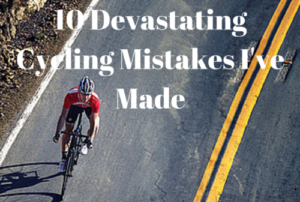Everyone makes cycling mistakes when they're starting out. Even the best riders, the most experienced racers, and the best coaches make mistakes too. Sometimes those mistakes are small hiccups in your training and sometimes they can be dangerous or hazardous to your health. I've made a ton of cycling mistakes in my journey from beginner to racer to coach. Each one has been a learning experience, and each one has formed my training, racing and coaching strategy.
In today's Tailwind Coaching Podcast, I'm going to share the 10 most devastating cycling mistakes I've ever made. I'll tell you how they happened, how they can ruin your cycling fitness and how you can prevent them from happening to you.
If you like the podcast, don't forget to head over to iTunes and rate the podcast 5 stars to help me reach a few more cyclists each episode!
Click through the jump to listen and check out the podcast show notes, which contain all the links I've mentioned in the podcast.
Podcast: Play in new window | Download (Duration: 1:10:15 — 54.0MB)
Subscribe: RSS
What are cycling mistakes?
Everyone makes cycling mistakes, and some of them can be plain old dangerous. Check out the show notes for some notes about the experiences I've had with these 10 cycling mistakes, along with tips on how to prevent them.
 Not eating enough and bonking
Not eating enough and bonking
Early 2013, Sunday “Team Throw Down” – I didn't eat enough on one Sunday team throw-down. I didn't eat breakfast, and only drank a cup of coffee before pushing off. After an easy 20 mile rollout, the pace ramped up. By the last 5 miles, the lights completely went out. The bottom line is you need carbs when performing high-intensity work, and carb stores are limited, especially early in the morning. Your body uses blood sugar and muscle glycogen first, then glycogen released from the liver to stabilize blood sugar. Gluconeogenesis can resynthesize glucose, but it takes energy and time.
Prevent this mistake: Carry a [easyazon_link identifier=”B000VJ1ZBS” locale=”US” tag=”taicoaandthed-20″]gel flask[/easyazon_link] with [easyazon_link identifier=”B002AGEA6C” locale=”US” tag=”taicoaandthed-20″]some carbohydrate gel[/easyazon_link] in it, some [easyazon_link identifier=”B0054RPY7I” locale=”US” tag=”taicoaandthed-20″]energy bars[/easyazon_link] or some other kind of food (check out the [easyazon_link identifier=”1937715000″ locale=”US” tag=”taicoaandthed-20″]Feed Zone Portables cookbook[/easyazon_link] for ideas.) Eat after an hour of hard training or 2 hours of easier riding.
Not drinking before a super hot/humid ride
August 2013, Thursday Training Ride – Before a hard Thursday training ride, I saddled up and headed out. Throughout the day, I didn't drink anything before going out, and I didn't do any kind of pre-ride electrolyte loading. We rolled out, started a 3 mile climb with a super stiff pace. After about 15 minutes of hard riding, I got dizzy, lightheaded, started to get tunnel vision and had to sit on a step and pour water over my head with helmet off while I “came to”.
Prevent this mistake: Pre-hydrate about a half hour before the ride with [easyazon_link identifier=”B00MFSZYGK” locale=”US” tag=”taicoaandthed-20″]sports drink[/easyazon_link], carry plenty of water and drink regularly through the ride. As a general rule, I recommend you drink every 5 miles (or 15 minutes, whichever comes first.) Also check out my tips to keep cool in the heat.
Switching equipment right before a major event
In August 2011 – Before racing tour of the Catskills, I switched gearing. Not only did I change the gearing on the cassette (12-25 to 11-28) and the wheels, I changed to compact cranks with a different length. I adjusted the saddle height a bit but didn't ride on new setup. Catskills has lots of climbing and after 15 miles in my right knee was killing me. Mostly due to crank length change.
Check out my experience with riding the Devils kitchen climb.
Prevent this mistake: Always “shake down” your bike for a week after making changes in your setup. It lets your body get used to a new position or gearing.
 Ignoring drivetrain wear and skipping gears
Ignoring drivetrain wear and skipping gears
This season – I was practicing rolling sprints and hadn't serviced my drivetrain except swapping to a worn cassette. During a full out sprint the chain slipped on the 12 tooth cog, dropped off the front, my foot came out of pedal and I “stood up” on the pavement while moving at 35 miles per hour. I ground the toe off my cleat and ended up with a big bruise on my opposite thigh from the nose of the saddle jamming into it.
Prevent this mistake: Pay attention to the wear on your drivetrain and replace parts as necessary.
Warming up too hard for the effort at hand
At the 2011 Brinkerhoff Series – It was kind of chilly to start, around 44-45 with big winds. I spent 30-35 minutes on the trainer warming up hard. The speed of the pack was not what I expected and I ended up warming up too hard for the actual race. I blew up my engine before the race even started and felt awful from the gun and spent most of the day with heavy legs, see-sawing through the group. The legs were just generally not working well at all. Ultimately, I made a mistake in the cross winds and got shelled off the back on the second lap.
Prevent this mistake: The shorter the race or effort ahead, the harder the warm up and visa versa. Check out my tips about a proper warm up in this post.
Not warming up AT ALL before a big effort
At a May 2014 training crit – I got stuck in traffic getting to a crit about 45 minutes away, and it ultimately took 1:45 to get there. I had just enough time to pin a number and roll to the start line, but I didn't have time to warm up. I spectacularly blew up after 5 laps (of 15) after I burned up all my glycogen.
Prevent this mistake: Ensure you do SOME kind of warm up before your effort, just to get the aerobic machinery running properly. If you're not able to warm up on the race course, you should [easyazon_link identifier=”B00F4TVDJY” locale=”US” tag=”taicoaandthed-20″]use a stationary trainer[/easyazon_link] to get warmed up.
Running deep section wheels in big crosswinds
During a group ride in late 2013 – I happened to be running my 58mm deep racing wheels, and didn't feel like changing them out. I took them out on a training ride in some stiff crosswinds and almost ate it several times. I simply wasn't prepared for the sail-like effect of the huge section rims and how they affect bike handling in cross winds.
Prevent this mistake: Get some upper body strength (raw strength) to be able to control the wheels. Practice with them on less windy days before heading out with a group or peloton. Or, on windy days, switch to a [easyazon_link identifier=”B003O59EGE” locale=”US” tag=”taicoaandthed-20″]nice set of box section wheels[/easyazon_link] that have a lower aero profile but are still lightweight.
Not carrying a spare tube or patches
During an April 2014 shakedown ride of my BMC race bike – I went out for an early season shakedown ride on dirt and gravel. It should be noted that I was carrying A tube but didn't have more. I flatted not once, not twice, NOT THREE TIMES but FOUR TIMES! Thankfully my wife carried an emergency patch kit and her own tube, plus a hand pump which helped us get home.
Prevent this mistake: Carry some [easyazon_link identifier=”B000WY730O” locale=”US” tag=”taicoaandthed-20″]emergency patches[/easyazon_link], [easyazon_link identifier=”B000YBGJRS” locale=”US” tag=”taicoaandthed-20″]a tire boot[/easyazon_link], and a [easyazon_link identifier=”B00YEJCACY” locale=”US” tag=”taicoaandthed-20″]couple of spare tubes[/easyazon_link] as well as [easyazon_link identifier=”B00IZ5UT8K” locale=”US” tag=”taicoaandthed-20″]a hand pump[/easyazon_link] to ensure you don't run out of CO2.
 Having eyes that are bigger than your legs
Having eyes that are bigger than your legs
All the time – Do you ever come up to a climb and think “that's no problem, I've got it.” Suddenly about half way up on the climb you find yourself going backwards, suffering badly and people are passing you? Your eyes are bigger than your legs and you underestimated how difficult the climb is.
Prevent this mistake: Learn how to read the road ahead and practice it regularly. Ride more conservatively until you're sure you have the climb in the bag.
Overestimating your fitness for a big ride
During Hell of Hunterdon in March 2013 – I thought I'd be fine through the 70 miles that makes up the par course. I ended up falling apart around mile 60 after the steepest climb on the course. I'd overestimated my ability to go hard (especially on tough, dirt road terrain) for longer periods of time and limped home. It wasn't a case of not eating or anything like that, I simply ran out of endurance/ME.
Prevent this mistake: Build your ME and endurance to handle AT LEAST the duration of your target event(s). Don't focus on your functional threshold power right from the start. All of my training systems are designed for just this application.
So now that I've shared my worst moments with you, what are some of your big lessons? If you've made some mistakes that you aren't sure how to fix, send me an email and I can help you out. Don't forget that if you're struggling to meet your training goals, you can pick from a ton of great training options in my downloadable training plan store, including my new Unbreakable Core Stability module and my upcoming Track Module which will help you sprint like a Ferrari. You can also get a ton of great training tips FOR FREE by signing up for the Tailwind Coaching Newsletter. You'll also get a free bonus training plan, updates, and exclusive discounts like the Unbreakable Core Stability discount!
If you enjoyed this episode, head over to the Tailwind Coaching Podcast on iTunes and rate it 5 stars. A positive review helps the podcast move up the ratings, reach more listeners, and help more people get stronger, faster and fitter. Post any questions to the Tailwind Coaching Facebook page, contact me via email or leave a comment below.
